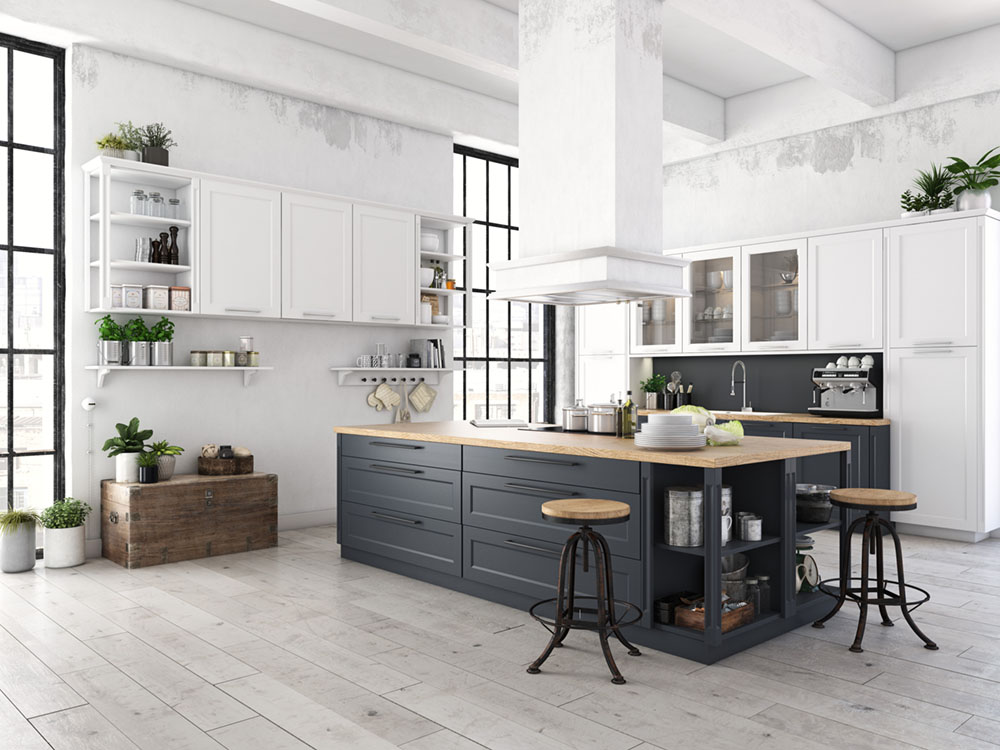Why Your First Home Should Be a Condo: A Smart Choice for New Homebuyers
 Are you a first-time homebuyer looking to dip your toes into the real estate market? Navigating the world of homeownership can be daunting, but one option that might be perfect for you is purchasing a condominium. Condos offer a unique blend of benefits that can make them an ideal choice for first-time buyers. Let’s explore why a condo might be the perfect place to start your homeownership journey.
Are you a first-time homebuyer looking to dip your toes into the real estate market? Navigating the world of homeownership can be daunting, but one option that might be perfect for you is purchasing a condominium. Condos offer a unique blend of benefits that can make them an ideal choice for first-time buyers. Let’s explore why a condo might be the perfect place to start your homeownership journey.
- Affordability One of the biggest advantages of buying a condo is affordability. Generally, condos tend to be less expensive than single-family homes in the same area. This can make them a more accessible option for first-time buyers who might be working with a limited budget. Lower purchase prices also mean smaller down payments and potentially lower monthly mortgage payments, easing the financial burden of homeownership.
- Lower Maintenance and Upkeep Condos often come with the added benefit of lower maintenance responsibilities. Most condo associations take care of exterior upkeep, landscaping, and common area maintenance. This means you won’t have to worry about mowing the lawn, shoveling snow, or making repairs to the building’s exterior. For busy professionals or those who aren’t handy with a toolbox, this can be a significant advantage.
- Amenities and Community Features Many condo developments offer a range of amenities that can enhance your living experience. These can include swimming pools, fitness centers, communal gardens, and recreational areas. Access to such facilities can significantly boost your quality of life without the additional cost and effort of maintaining them yourself. Additionally, living in a condo can provide a sense of community, as you’ll be sharing these spaces with your neighbors, potentially fostering new friendships and a supportive network.
- Prime Locations Condos are often located in desirable urban areas, close to shops, restaurants, public transportation, and other conveniences. If you’re looking to live in the heart of the city or a vibrant neighborhood, a condo might be the best way to afford that lifestyle. This prime positioning can reduce commute times and increase your access to cultural and social activities, enhancing your overall living experience.
- Security Many condo buildings offer enhanced security features, such as gated entrances, security cameras, and on-site security personnel. For first-time homebuyers, this added layer of security can provide peace of mind. Knowing that there are measures in place to protect you and your property can make condo living a safer option, especially in urban areas.
- Investment Potential Condos can also be a good investment. As a first-time buyer, purchasing a condo can be a stepping stone to building equity and increasing your financial stability. Over time, as property values appreciate, your investment in a condo can grow, potentially providing you with a substantial return when you decide to sell. Additionally, condos can be easier to rent out compared to single-family homes, providing you with flexibility if you decide to move but want to retain the property as an investment.
- Simplified Homeownership For many first-time buyers, the simplicity of condo living can be very appealing. With fewer responsibilities and a supportive community environment, you can enjoy the benefits of homeownership without being overwhelmed by the demands that typically come with owning a single-family home. This can provide a smoother transition into owning property and help you gain confidence and experience as a homeowner.
Conclusion
Choosing a condo for your first home offers a range of benefits that can make the experience of homeownership more accessible and enjoyable. From affordability and lower maintenance to prime locations and enhanced security, condos provide an excellent opportunity for first-time buyers to enter the real estate market. If you’re ready to take the plunge into homeownership, a condo might just be the perfect starting point for your journey.
Compliments of Virtual Results




 Buying a home is a significant milestone, but it can also be a daunting financial endeavor. For veterans, active-duty service members, and certain members of the National Guard and Reserves, the Department of Veterans Affairs (VA) offers a valuable resource to make homeownership more accessible: the VA loan. Understanding how VA loans work and the benefits they offer can help you navigate the home-buying process more effectively. Let’s dive into how VA loans can help you achieve your dream of homeownership.
Buying a home is a significant milestone, but it can also be a daunting financial endeavor. For veterans, active-duty service members, and certain members of the National Guard and Reserves, the Department of Veterans Affairs (VA) offers a valuable resource to make homeownership more accessible: the VA loan. Understanding how VA loans work and the benefits they offer can help you navigate the home-buying process more effectively. Let’s dive into how VA loans can help you achieve your dream of homeownership. As June unfolds, the real estate market is buzzing with activity. Whether you’re considering buying or selling a home this month, understanding the current market dynamics is crucial. Here’s what you need to know to navigate the process successfully.
As June unfolds, the real estate market is buzzing with activity. Whether you’re considering buying or selling a home this month, understanding the current market dynamics is crucial. Here’s what you need to know to navigate the process successfully. Whether you’re preparing to sell your home or just looking to make some improvements, enhancing the value of your property doesn’t have to break the bank. With a bit of creativity and some strategic updates, you can make your home more appealing and potentially boost its market value. Here are some budget-friendly ideas to help you get started.
Whether you’re preparing to sell your home or just looking to make some improvements, enhancing the value of your property doesn’t have to break the bank. With a bit of creativity and some strategic updates, you can make your home more appealing and potentially boost its market value. Here are some budget-friendly ideas to help you get started. Natural light is more than just a design element; it is a powerful force that can transform your living space, enhance your well-being, and even impact your energy consumption. Embracing natural light in your home can bring about numerous benefits, from aesthetic improvements to psychological and physiological advantages. Let’s delve into the multifaceted power of natural light and how you can maximize its presence in your home.
Natural light is more than just a design element; it is a powerful force that can transform your living space, enhance your well-being, and even impact your energy consumption. Embracing natural light in your home can bring about numerous benefits, from aesthetic improvements to psychological and physiological advantages. Let’s delve into the multifaceted power of natural light and how you can maximize its presence in your home.
 In the dynamic realm of real estate, negotiation skills can make all the difference between a satisfactory deal and a stellar one. Whether you’re a seasoned investor or a first-time homebuyer, understanding the art of negotiation is paramount in securing the best possible outcome. In this post, we’ll uncover the top negotiation secrets that savvy buyers utilize to land exceptional deals in the real estate market.
In the dynamic realm of real estate, negotiation skills can make all the difference between a satisfactory deal and a stellar one. Whether you’re a seasoned investor or a first-time homebuyer, understanding the art of negotiation is paramount in securing the best possible outcome. In this post, we’ll uncover the top negotiation secrets that savvy buyers utilize to land exceptional deals in the real estate market. Selling a home can be a daunting task, especially in a competitive real estate market. While many homeowners are aware of the basic responsibilities of a listing agent—such as marketing the property and facilitating negotiations—there are numerous hidden ways these professionals work tirelessly behind the scenes to ensure a quicker sale at a higher price. Let’s delve into some of these lesser-known tactics that listing agents employ to benefit homeowners.
Selling a home can be a daunting task, especially in a competitive real estate market. While many homeowners are aware of the basic responsibilities of a listing agent—such as marketing the property and facilitating negotiations—there are numerous hidden ways these professionals work tirelessly behind the scenes to ensure a quicker sale at a higher price. Let’s delve into some of these lesser-known tactics that listing agents employ to benefit homeowners.
 Buying a new home is an exciting chapter in your life. But it can quickly turn into a nightmare if you don’t pay attention to the crucial step of the home inspection. A shoddy inspection can lead to unexpected problems and expenses down the road. Let’s explore how to avoid a home inspection horror story, ensuring you make an informed decision when investing in your dream home.
Buying a new home is an exciting chapter in your life. But it can quickly turn into a nightmare if you don’t pay attention to the crucial step of the home inspection. A shoddy inspection can lead to unexpected problems and expenses down the road. Let’s explore how to avoid a home inspection horror story, ensuring you make an informed decision when investing in your dream home.

 Catch Our Feed
Catch Our Feed Subscribe via Email
Subscribe via Email Follow Our Tweets
Follow Our Tweets Friend Us On Facebook
Friend Us On Facebook Watch Us On Youtube
Watch Us On Youtube